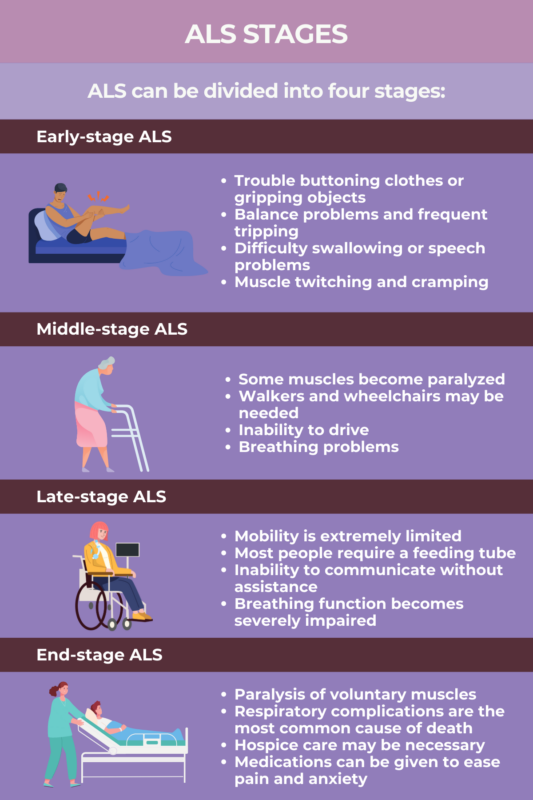FAQs about ALS stages
Amyotrophic lateral sclerosis (ALS), also called Lou Gehrig’s disease, can be broadly divided into four stages: an early stage in which symptoms first appear, a middle stage where symptoms worsen and mobility becomes substantially impaired, a late stage characterized by near-total paralysis, and an end stage that leads to death.
The speed at which amyotrophic lateral sclerosis (ALS) progresses can vary a lot from person to person, but typically the disease progresses quite rapidly. Most patients reach the late stage of ALS within two to three years after symptom onset, and the average survival time is about two to five years from onset.
Although there is no cure for amyotrophic lateral sclerosis (ALS), there are several approved therapies that can slow disease progression, helping patients to maintain functionality for longer and prolonging survival. Patients and their healthcare team should establish a treatment plan to slow progression and help with symptoms early in the disease course.
The earliest signs of amyotrophic lateral sclerosis (ALS) vary from patient to patient, and depend on the region of the body that is first affected. For the vast majority of patients, in which limbs are first affected, early symptoms include difficulty grabbing objects or writing, and trouble with walking and balance. When the first muscles affected are located around the mouth and throat, initial symptoms include problems speaking or swallowing.
The final stages of amyotrophic lateral sclerosis (ALS), in which patients are fully paralyzed, typically last just a few months. However, the disease course will largely depend on the exact type of ALS and disease-associated mutations a person has, as well as on the kind of medical treatments and supportive therapies that are given.
Related Articles

 Fact-checked by
Fact-checked by 








